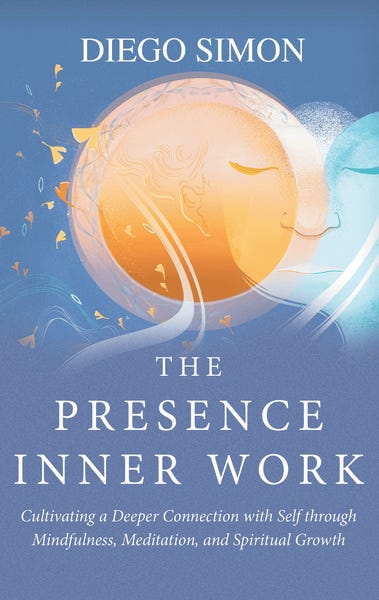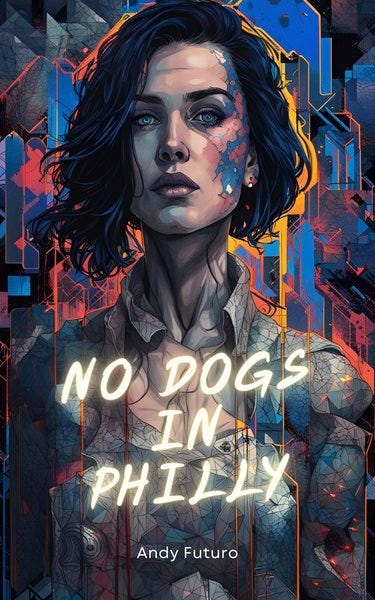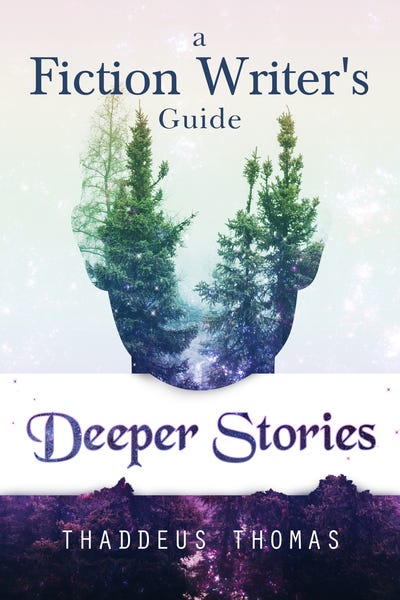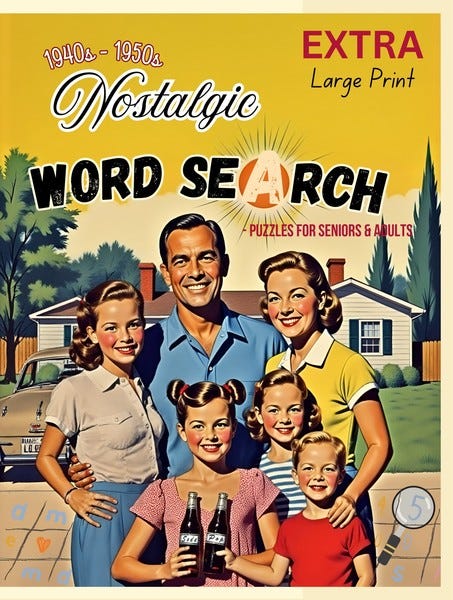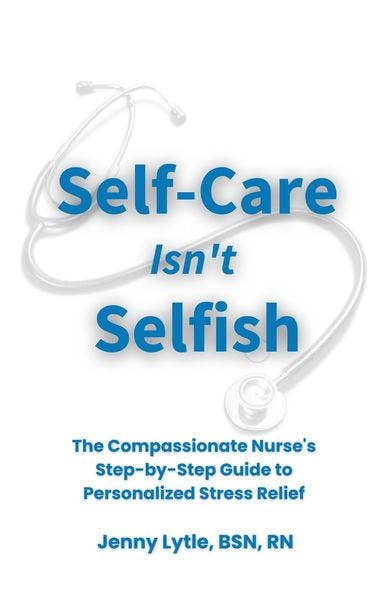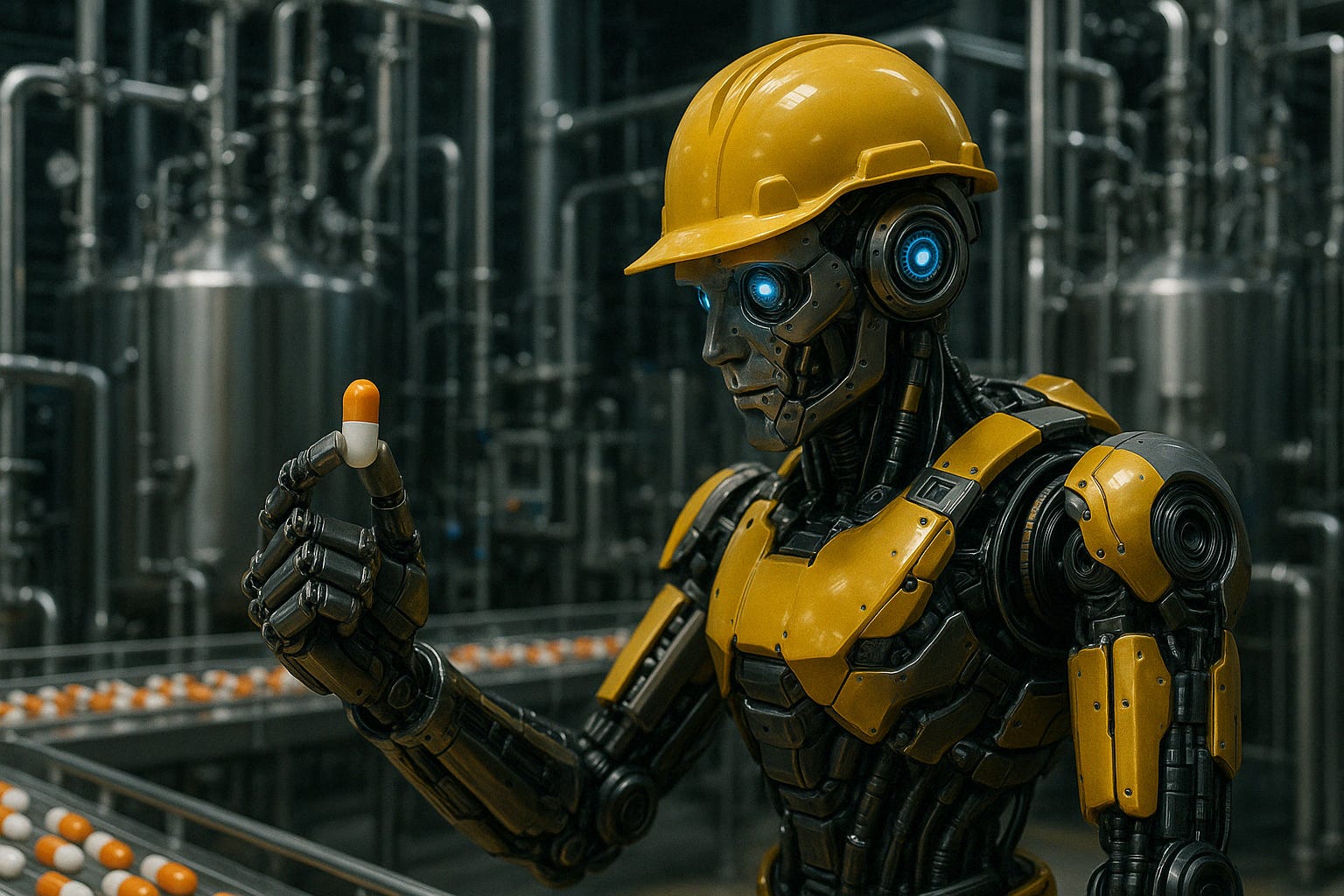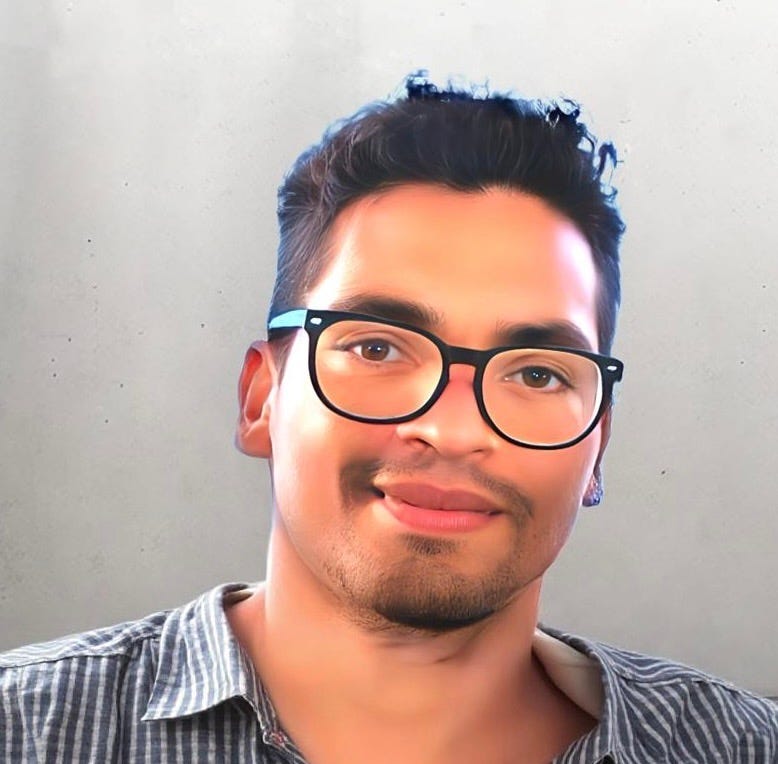The AI Drug Revolution
How Algorithms Are Reinventing Chemistry and Drug Discovery
Editor’s Note: I got together with some author friends and decided to give away our books for free. That’s right. You can get my new memoir, Hell & Paradise, and over 25 other nonfiction titles for free. Check it out here.
💥 Best for a Gut-Punching Power Read
Hell and Paradise by Anton Volney
A fierce, high-voltage wake-up call about truth, survival, and what happens when you finally give yourself permission to be powerful. 🔥
(Yes, that’s you. And yes, it’s making waves.)
🧠 If You Want More Clients
Get More Clients by Lynn M. Whitbeck
Get More Clients is a short, easy-to-read book that walks you through simple, proven tips to close more sales and grow your business.
🔮 For the Meditative & Mindful
The Presence Inner Work by Diego Simon
A calming, spacious read that feels like a long exhale. Great for inner work and visualization.
👻 Dark & Gritty
No Dogs in Philly: A Cyberpunk Horror Noir by Andy Futuro
Grit meets glitch. Think Blade Runner meets Stephen King. If that combo excites you? Dive in.
🤓 For the Writers in the Room
A Writer's Guide to Deeper Stories by Thaddeus Thomas
Masterclass in emotional depth and layered storytelling. A must-read if you’re crafting powerful narratives.
🧩 Nostalgic & Wholesome
My Old Memory Pieces: 1950s Golden Age Everyday Life
A cozy, slow-sipping cup of tea in book form. Takes you back to a time when life felt simpler (at least on the surface).
🍵 For The Self Help Junkie
Self-Care Isn’t Selfish by Jenny Lytle, BSN, RN
The compassionate nurse's step-by-step guide to personalized stress relief.
🧘For The Spiritually Minded
How to Attain Eternal Peace by Pranay Saha
Mastery over the self, transcend illusions of mind, connect with universal consciousness, and achieve deep inner peace
Okay, now let’s get into it…
The AI Drug Revolution
Dear Permission to Powerful Reader,
👉 What if life-saving drugs could be invented not over years, but weeks?
👉 What if new antibiotics didn’t emerge once every decade, but in batches, by algorithmic design?
👉 What if AI didn’t just help chemists, but began replacing intuition?
This isn’t science fiction. It’s happening now—and the consequences are staggering.
For most of modern pharmaceutical history, drug discovery has been a slow, expensive, and failure-ridden process. Teams of scientists would spend years developing a single promising molecule, most of which would never make it to market.
According to industry benchmarks, bringing a new drug from concept to pharmacy shelves takes 10–15 years and costs upward of $2.6 billion (DiMasi et al., 2016).
That means millions of compounds synthesized, tested, and discarded. It means decades lost in the pursuit of maybe.
Then came AI.
2020 a seismic shift occurred: the first-ever AI-designed drug candidate entered human trials. Developed by UK-based Exscientia and Japanese pharmaceutical company Sumitomo Dainippon Pharma, this molecule for treating obsessive-compulsive disorder (DSP-1181) didn’t emerge from trial-and-error. It was computed, designed, and optimized by machine learning algorithms trained on massive chemical and biological datasets. The process took less than 12 months. Traditional methods would’ve taken five to six years.
This was no fluke. By 2022, more than 15 AI-discovered drug candidates were advancing through clinical development (CAS, 2022). These weren’t just generics with new coats of paint. They were structurally novel molecules, targeting everything from fibrosis to cancer, generated by platforms like Insilico Medicine, Evotec, and Schrödinger.
Welcome to the AI molecule revolution, where drug discovery's design, make, and test cycle is no longer the bottleneck.
Why Now?
AI is flourishing in chemistry today because it’s ideally suited to problems of infinite possibility.
The chemical universe is absurdly vast—estimates suggest there are over 10⁶⁰ possible drug-like molecules, more than atoms in the universe. No human could ever sift through that haystack to find the medicinal needles. But AI can.
Deep learning models—especially generative ones—can be trained on millions of known molecules, learning to predict structure and function, absorption, toxicity, metabolism, and even synthetic feasibility. They act as algorithmic chemists, proposing candidates that fit a therapeutic profile, running millions of simulations, and improving with every iteration.
Companies like Exscientia have built systems that merge AI design with robotic synthesis, creating a loop in which the machine proposes, tests, and improves without needing sleep, ego, or lunch breaks.
It’s Not Just Faster—It’s Smarter
This isn’t just about acceleration. It’s about exploration.
In 2020, a team at MIT used a deep neural network to identify an entirely new antibiotic, later named halicin.
The AI found it in a chemical library of over 100 million compounds—a scale impossible for human researchers to evaluate manually. Even more stunning? Halicin’s structure was unlike any known antibiotic. It broke the mold.
Halicin worked against drug-resistant bacteria that current treatments couldn’t touch. It cleared infections in mice that would’ve otherwise died. And it proved something powerful:
AI doesn’t just copy what we know—it shows us what we’ve missed.
This moment shifted the conversation. From “Can AI help chemists?” to “Can AI invent things human chemists never would?”
The Industry Wakes Up
Major pharma players aren’t sleeping on this. Pfizer, GSK, Roche, and Sanofi have all partnered with AI-first drug discovery platforms. Google DeepMind launched AlphaFold, which cracked the protein folding problem and is now reshaping structure-based drug design.
Startups spring up weekly with names like Atomwise, BenchSci, PostEra, and Valence Discovery, each leveraging different AI architectures to outcompete traditional discovery methods.
And investors have taken notice. AI pharma startups raised over $2 billion in funding between 2020 and 2022 alone, and market analysts expect this sector to hit $50 billion by the end of the decade.
This is no longer a fringe experiment. It’s a full-blown arms race—with biology, chemistry, and computation converging at light speed.
The Real Breakthrough: AI as an Experimental Partner
AI doesn’t just analyze data—it increasingly proposes experiments.
In fields like chemical synthesis, platforms such as IBM’s RXN or Synthia can plan synthetic routes for new molecules, offering detailed “recipes” that once took expert chemists hours or days to devise. Some labs are now running self-driving chemistry systems:
AI proposes reaction conditions, robotic arms carry them out, the results feed back into the model, and the cycle continues—autonomously.
This “closed-loop chemistry” is more than efficient. It learns. Every failed reaction teaches the system how to fail less next time—until it achieves a result no human could’ve imagined.
What’s At Stake
The stakes are immense. If even a handful of AI-designed drugs prove effective in the clinic, it will validate AI as the most critical accelerator in pharmaceutical history.
Diseases once thought “undruggable” may become targets.
Personalized medicines could be developed in weeks, not years.
But it also raises questions: Who owns the IP of an algorithm-designed molecule? Can regulators keep pace with AI’s speed? Will this democratize drug discovery—or consolidate power in the hands of tech giants?
Those debates are just beginning.
What’s clear is this:
We are no longer discovering drugs alone.
We’ve invited the algorithm into the lab—and it’s not just helping.
It’s leading.
THE AI SCIENCE REVOLUTION
Imagine if the cure for cancer, the end of antibiotic resistance, and even a safe path to nuclear fusion... could all be accelerated, not by armies of scientists, but by machines that teach themselves how nature works.
Welcome to the AI Science Revolution — where lab coats meet neural nets... and the impossible becomes inevitable.
THE DEATH OF THE OLD DRUG DISCOVERY MODEL
Big Pharma used to take 10–15 years and billions of dollars to bring a new drug to market. Now? AI platforms are collapsing that timeline into months.
In 2020, Exscientia developed the first AI-designed molecule to enter human trials in under 12 months. By 2022, 15+ AI-born drug candidates were in clinical development. Insilico, Evotec, and Schrödinger are all racing toward algorithm-born miracle cures.
Why? AI slashes the “Design–Make—Test” cycle. It finds better compounds faster and adapts in real time.
Here’s the real kicker:
👉 Over 18,500 diseases exist.
👉 Less than 22% have any approved treatment.
👉 That leaves 10,000+ conditions uncured. AI isn't just speeding up medicine — it's unlocking the locked.
Future Snapshot:
You wake up sick. Your smart mirror runs a test. AI designs a custom pill. A drone drops it off by lunch. Personalized medicine. No waiting rooms. No guesswork.
THE FIRST MACHINE-BORN ANTIBIOTIC
MIT’s AI discovered Halicin, a compound that annihilates superbugs. Unlike anything ever made, it doesn’t just kill bacteria; it nukes resistance itself.
By 2023, AI had also discovered other potent antibiotics, like one that targets Acinetobacter baumannii, one of the world’s most dangerous hospital pathogens.
Future Snapshot:
You cut your finger. AI at the clinic instantly scans it, identifies the germ, and picks a custom antibiotic. Hospitals become self-sanitizing zones, fighting bacteria with AI-invented compounds.
AI IN MATERIALS SCIENCE: DESIGNING THE BUILDING BLOCKS OF TOMORROW
Stanford’s AI helped uncover Li₈B₁₀S₁₉ — a solid electrolyte that might power safer, longer-lasting batteries.
Northwestern researchers found a new metallic glass. MIT used AI to discover better materials for capturing carbon.
Future Snapshot:
A kid in the desert charges her tablet with a solar patch on her backpack. Cars go 1,000 miles on a single charge, and batteries charge in seconds—all thanks to AI-designed materials.
AI doesn’t just find new stuff. It also figures out how to make it better. AI-controlled metal 3D printers found faster, stronger titanium recipes — rewriting the rules of aerospace engineering.
SELF-DRIVING LABS AND ROBOT CHEMISTS
AI is reinventing how experiments are conducted—platforms like IBM RXN and Synthia design chemical synthesis routes. Self-driving labs mix, test, and learn—no humans are needed.
Future Snapshot:
A city needs water filters. A robotic lab builds them from scratch in hours. Clothing companies ask for self-cleaning fabric. It’s delivered the next day. Chemistry becomes as fast as coding.
THE AI-CONTROLLED FUSION REACTOR
Fusion used to be a physicist’s pipe dream. Now? DeepMind’s AI learned to stabilize plasma — something humans had tried and failed to do for decades.
Future Snapshot:
It’s 2035. Cities run on fusion. No smoke. No carbon. No limits. AI balances the pressure and heat of miniature suns. Power is abundant and clean.
AI THAT SEES PLANETS AND WISPS OF PHYSICS
NASA’s ExoMiner found 301 planets in one pass. DeepMind’s GraphCast outperformed human-made weather models. On Mars, AI helps the Perseverance rover choose rock samples.
AI systems like Feynman and others generate new physical equations, spotting particles, and helping physicists decode the universe.
Future Snapshot:
AI spots a dim star wobble and declares: "New planet. Potential for life." Kids explore alien worlds in VR as AI maps the galaxy in real time.
AI IN CLIMATE, CONSERVATION & CLEANUP In 2022, UT Austin's AI designed FAST-PETase — an enzyme that eats plastic in under 48 hours.
Google uses AI to cut cooling bills. IBM is using AI to invent carbon capture molecules. Satellites scan Earth for illegal deforestation. Wildlife trackers monitor rare species using AI eyes.
Future Snapshot:
Trash gets fed to AI-sorted machines that turn it into reusable raw materials. Oceans clear up. Turtles swim free. Your old sneakers? Now part of a bench in the park.
AI IN CITIES, FARMS, AND FACTORIES Smart farms talk to the sky. Soil sensors alert AI: "Plant corn next week." Vertical gardens feed cities. In traffic, AI reroutes cars before a jam ever forms.
Future Snapshot:
Robot nurses gently lift patients. Robot butlers fold laundry. AI-run factories make custom products on demand. You click "buy" — and a drone delivers your made-to-order item an hour later.
ROBOTIC DEXTERITY AND AUTOMATION OpenAI taught a robot hand to solve a Rubik’s Cube. Google’s PaLM-E lets robots take verbal commands and act in real-world environments.
Future Snapshot:
Grandma’s robot helper makes her tea and reminds her to take meds. Construction bots carry steel beams. AI-guided machines print jet engines and bridges that flex during earthquakes.
THE BOTTOM LINE
AI is not just helping scientists. It’s replacing trial-and-error with discovery-by-design.
In medicine, it builds cures faster than ever.
In chemistry, it builds molecules on command.
In physics, it solves puzzles humans never could.
In energy, it tames the sun.
In nature, it protects the wild.
In factories, it designs, builds, and delivers.
AI isn’t magic. But it feels like it sometimes.
And it’s building the future — one intelligent guess at a time.
Are you paying attention?
🛑 I’ll Be Honest With You…
AI made my job obsolete last summer.
Not “in theory.”
Not “someday.”
It already happened.
And I took it personally. I grieved. I raged.
I spiraled.
My biggest client, Tony Robbins, fired me after I asked for a raise.
Said I was “undeserving.”
My best friend betrayed me.
Another ally ghosted.
The industry I’d spent years climbing—gone overnight.
I was blackballed.
Tarred and feathered.
Left for dead.
The message couldn’t have been clearer:
“You’re a failure. You don’t belong. You’ll never make it.”
But here’s the thing:
They were wrong.
Because I didn’t quit.
I got a head start.
And now?
I’m building something new—right in the middle of the storm.
Not just out of survival.
But out of principle.
Out of vengeance.
⚡️ I’m not selling you a dream of success wrapped in a fake smile.
I’m giving you tools.
Insight.
Fire.
And a clear path through this AI-shifting, economy-shattering, reality-warping new world.
I’m creating a new publishing empire that starts with honesty and scales with intelligence, soul, and science.
Something that makes room for:
👉 The people whom the system has crashed
👉 The misfits who never quite fit in
👉 The creators who know they’re meant for more
👉 The strivers who lost their footing, but never their will
🤝 Let’s Build This Together
I’m offering you a 30-day free trial to my VIP experience.
No gatekeeping. No fluff.
Just a raw invitation to join me while I build this thing from the ground up.
What you’ll get:
Behind-the-scenes access to how I’m using AI to 10x my skills
Tactical insights, prompts, and systems for your transformation
Access to my Substack’s Inner Vault, where I store all the best frameworks, prompts, tools, and high-leverage ideas
Weekly audio letters from me—uncensored, unpolished, unscripted
A front-row seat to the rebuild. The empire. The revenge.
🎯 This Isn’t About Motivation.
It’s About Reclamation.
I’m not here to inspire you. I’m here to fight next to you.
This world is shifting fast. And you can either:
Get caught in the wave
Or learn to ride it better than anyone else
You already know what I’m choosing.
If you feel even a flicker of resonance, join me.
👉 Start your 30-day free trial
Let’s show them what happens when you push the right person too far.
Let’s make the next era ours.
Until next time,
Anton
Dancer, Writer, Buddhist.
Sources:
Early cancer detection with AI: Hofvind et al., JAMA Network Open (2024) via Inside Precision Medicineinsideprecisionmedicine.com; Arasu et al., Radiology (2023) via RSNA Newsrsna.org; MIT News (2023) and CNN report on MIT CSAIL breast cancer AInews.mit.edu.
Google Health mammography AI: McKinney et al., Nature (2020) and RSNA summaryrsna.org.
DeepMind Moorfields eye AI: De Fauw et al., Nature Medicine (2018).
AlphaFold breakthrough: Jumper et al., Nature (2021); DeepMind blog (2022)deepmind.googledeepmind.google, Callaway, Nature news (2020).
AI-designed proteins: Hsu et al., Nature Chemical Biology (2022); Salesforce/UCSF ProGen work (2023)ucsf.eduucsf.edu; Baker Lab (UW) enzyme design (2021)oxfordglobal.com.
AlphaMissense variant prediction: Frazer et al., Science (2023); Nature news by Callaway (Sep 2023)nature.com.
AI drug discovery and first AI-designed drug trials: Exscientia & Sumitomo (DSP-1181, 2020), cas.org; CAS Insights report (2022), cas.org; Insilico Medicine (2021) – Zhavoronkov et al., Nature Biotechnology (2021).
AI-discovered antibiotic (Halicin): Stokes et al., Cell (2020); MIT Newsnews.mit.edu; Nature newsnature.com.
DeepMind AI for fusion control: Degrave et al., Nature (2022); DeepMind blog (Feb 2022)deepmind. Google.
AI for exoplanet discovery: NASA ExoMiner finds 301 exoplanets (Valizadegan et al., 2022) via HLF newsroom.hlf-foundation.org.
AI in astronomy (gravitational lensing, etc.): Petrillo et al., Monthly Notices of the RAS (2019); Jedicke et al., PASP (2022) – AI in asteroid detection.
AI-designed battery material (LBS): Ma et al., ACS Energy Lett. (2023); Stanford Newssustainability.stanford.edusustainability.stanford.edu.
AI-optimized 3D printing of Ti alloys: Croom et al., Additive Manufacturing (2025); ScienceDaily (Johns Hopkins APL)sciencedaily.comsciencedaily.com.
Huawei Pangu-Weather model: Bi et al., Nature (2023)nature.com; Huawei press release (2023)huawei.com.
UT Austin plastic-degrading enzyme: Austin et al., Nature (2022); UT Austin Newsnews.utexas.edunews.utexas.edu.
Waymo and Cruise robotaxis approved: CPUC permit (2023) via The Verge,theverge.com.
OpenAI Rubik’s Cube hand: Akkaya et al., arXiv (2019); OpenAI blogopenai.com.
Google PaLM-E robotics: Driess et al., arXiv (2023).
Covariant AI robots in warehouses: Chen et al., Science Robotics (2022).
Additional context from: MIT Technology Review, Nature News, Science News, and other press releases for the breakthroughs above.




